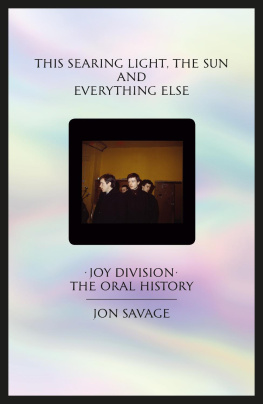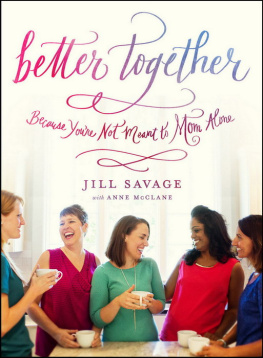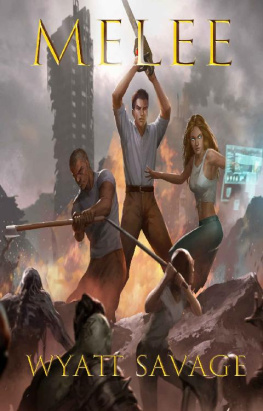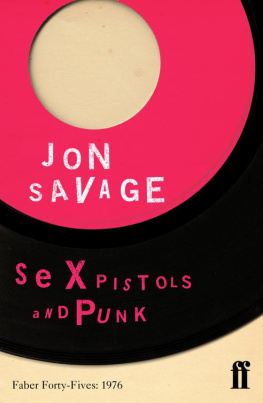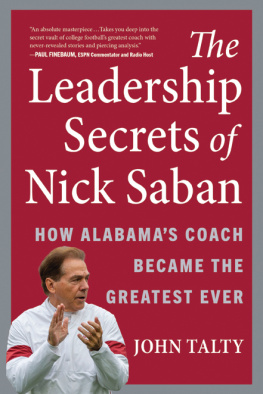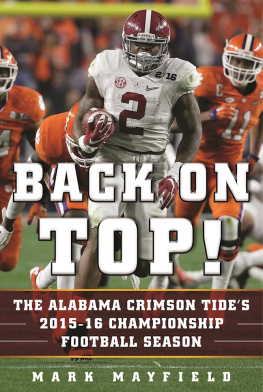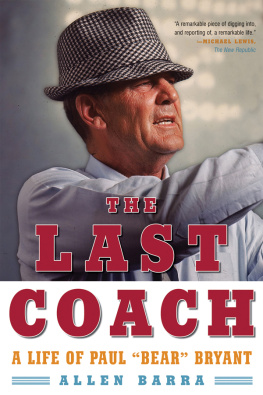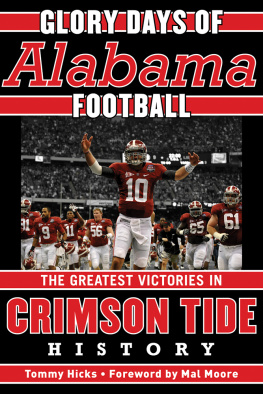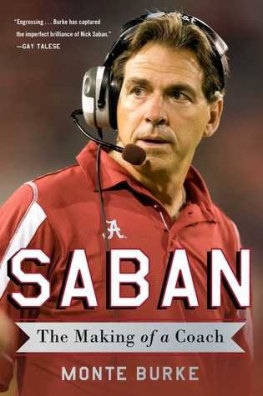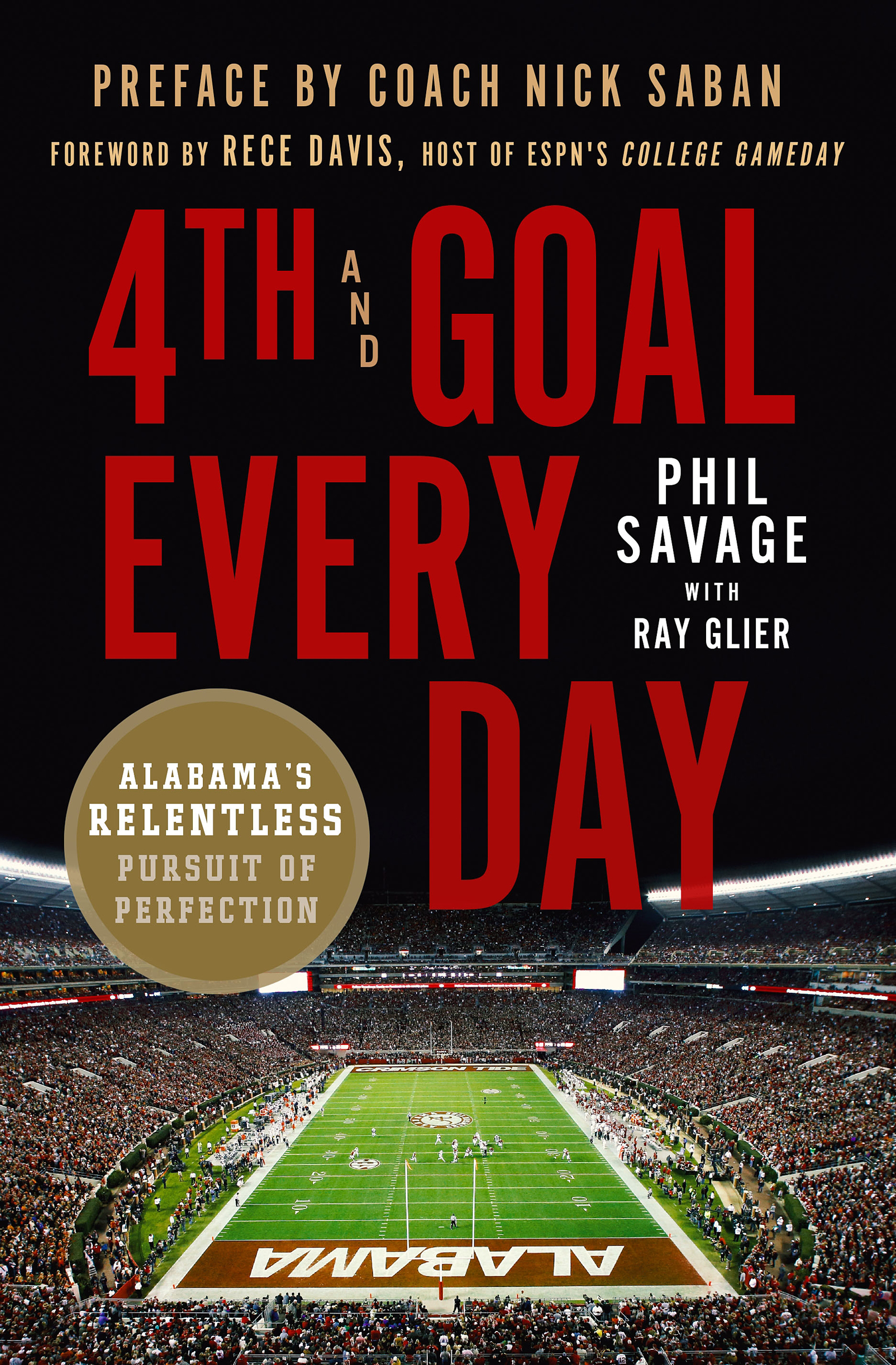Contents
Guide
Pagebreaks of the print version

The author and publisher have provided this e-book to you for your personal use only. You may not make this e-book publicly available in any way. Copyright infringement is against the law. If you believe the copy of this e-book you are reading infringes on the authors copyright, please notify the publisher at: us.macmillanusa.com/piracy.
To Dorothy, Honor, and Ever
In 2009, when Mal Moore approached me with the idea of Phil Savage becoming our radio color analyst, I could not have given him a higher recommendation.
Going back to our days on Bill Belichick's first staff in Cleveland, I knew the kind of work ethic, loyalty, and attention to detail he would bring to the job.
Through his experiences as a coach, scout, and general manager in the NFL, Phil has not only been an asset to the radio broadcasts, but he has also become a trusted part of our organization.
I am positive that this book will give football fans everywhere a unique perspective on our program, but even more, a true picture of what makes Alabama football so special.
Nick Saban
I dont remember exactly what brand of radio it was, but I was glued to it. I was a five-year-old in Guin, Alabama, and that black box with a silver antenna connected me to the Crimson Tide.
It was September 10, 1971, a Friday night. The Marion County High School Red Raiders had won their game, and now Alabama had a game on the West Coast against Southern California. Bedtime was negotiable for something epic, and Alabama football was always epic.
I lay on the floor, eyes fixed on that radio, maybe thinking that if I stared just a little harder, Id actually be able to see the players move across my radio dial.
This was the first game of the wishbone era under Bear Bryant. Throughout the game, I would run to my mom and dad to earnestly report what John Forney, the voice of the Tide, had said on the air:
Johnny Musso shook off two guys in the backfield.
Id proclaim it as if Id seen it myself. I guess I was practicing for a future career, but at that moment, I was certain I was destined to follow in the cleat marks of my favorite players, Musso and quarterback Terry Davis. Alabama upset the Trojans that night. It is my first memory of Alabama football.
I won my first bet that season, too. My babysitter, Mrs. Linda Aldridge, was a die-hard Auburn fan. Behind eventual Heisman Trophy winner Pat Sullivan, she was sure the Tigers would prevail when the two met in the Iron Bowl in a clash of unbeatens. Her confidence and teasing fueled my defense of the Crimson Tide. She goaded me into a wager, an agreement I immediately regretted when it occurred to me that I didnt have any money. Asking my parents was a risk. Gambling of any sort was frowned upon in the Davis household.
Turns out it was the stone-cold lock of the week. The Tide rolled 317, and Mrs. Aldridge graciously had the handsome sum of thirty-five cents ready for me upon my arrival at her doorstep Monday morning. The emotional investment and reward were far more exhilarating.
Two years later, my parents took me to Tuscaloosa for the first time. The first college game I ever saw in person, Alabama beat Virginia Tech, 776. College football in general and Alabama in particular had a near mystical quality. The players were larger-than-life. Whatever is bigger than that is what Coach Bryant was.
When I go into Bryant-Denny today, with crowds of more than one hundred thousand fans, the luxury suites, and the high-tech video board, the scene bears virtually no resemblance to the fifty-eight-thousand-seat bandbox I first walked into in 1973. That magical first trip as a seven-year-old never seems far away. I suspect my perspective is similar to that of a lot of kids growing up in Alabama. Football and church were the cornerstones of life. Hopefully, not in that order, though admittedly the lines got blurred from time to time.
My parents constantly reminded me that it was just a game. Crying over losses wasnt allowed. That made it necessary to pretend to take a late bath on New Years Eve 1973 to properly mournalone in the bathroomAlabamas one-point Sugar Bowl loss to Notre Dame. Mom and Dad figured I was allowed a few tears on that one. Perspective needed constant monitoring, but my emotional tie with the Crimson Tide was unmistakably deep and meaningful.
Alabama rarely lost when I was a kid, which is very much as it is in this era. What I didnt realize is that it wasnt nearly as easy as the Crimson Tide made it look then. That cold, hard truth became evident shortly after my enrollment at the University of Alabama. The first game I watched from the student section as a freshman in 1984 was against Boston College. Doug Flutie turned in a virtuoso performance leading the Eagles from a 3114 deficit to a 3831 win. Flutie went on to win the Heisman. The Tide went on to its first losing season in a quarter of a century.
Winning titles wasnt a birthright the way most of us thought, and nothing underscored that like the ubertalented 1986 team. A squad with Cornelius Bennett, Derrick Thomas, Jon Hand, Bobby Humphrey, Mike Shula, and Howard Cross didnt win the SEC. They didnt even win the state championship, losing to Auburn in the Iron Bowl. Alabama played in the Sun Bowl. The lesson: winning titles doesnt just happen.
Broadcasters have to take a step back from their childhood and student allegiances. Its the only way to do the job well. You owe that to your audience. Ive never believed that means you automatically become a cynic or disavow that you ever rooted for a team. It just demands that you be fair in your judgments. Broadcasters also get opportunities to look through unique windows and hopefully gain insight into what makes people interesting or successful, people such as Nick Saban.
I first met him in 1994. I was working at WJRT-TV in Flint, Michigan, and was just three months from leaving for ESPN. Nick was the guy Michigan State hired to replace George Perles.
I dont remember any of the questions I asked him, but I know it had nothing to do with the Process. I do recall that while he wasnt the polished speaker you see now, he did have a commanding presence in the room.
While Nick started to build his college rsum at Michigan State, Alabama football largely floundered for much of the 1990s and early 2000s, except for a brief run in the Gene Stallings era. The program was plagued by ill-advised coaching hires, NCAA sanctions, and a permeating sense of entitlement that kept Alabama bound by tradition rather than building on it.
While one of the storied programs in the sport, for much of my early years in the studio hosting college football for ESPN, Alabama was an afterthought. The Tide wasnt a must-see on the list of highlights for the show. When Alabama was discussed, it was usually about what expectations should be considered realistic and whether the school was a dinosaur whose dreams of a return to glory were remote at best or delusional at worst. For the record, I never bought that line of thinking, but it was commonplace among many of my colleagues to think Alabama was finished as a powerhouse.
I first met Phil Savage in 2005. It was in the press box at Williams-Brice Stadium in Columbia, South Carolina, for Steve Spurriers debut as the Gamecocks head coach. Phil had just become general manager of the Cleveland Browns. His keen eye for talent was well established in football circles. We are talking about the guy who, as a member of the Ravens front office, strongly advocated drafting Ray Lewis and Ed Reed. Seems easy now, but both of those picks were in the latter stages of the first round. As Browns GM, he grabbed offensive lineman Joe Thomas, who is still working on a Hall of Fame career.


